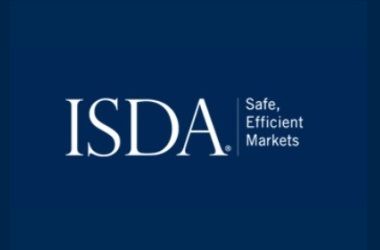The US$493trn over-the-counter derivatives market faces one of the biggest challenges in its history as the entire industry is forced to exchange daily variation margin on swaps exposures that are not cleared through central counterparties from March 2017.
At ISDA’s Annual Europe Conference in London yesterday, derivatives participants warned that a final-hour rush to comply with initial margin requirements, which went live for the largest dealers in the US, Japan and Canada on September 1, could be just a taste of the bigger challenges created by regulators’ “big bang” approach to variation margin .
“Initial implementation [of IM rules] appears to have gone well but if there has been a sigh of relief it has been very brief,” said David White, head of sales for triResolve at TriOptima, speaking on the sidelines of the event.
“The industry anticipates a big challenge for the next wave as variation margin captures thousands and thousands of counterparties, so there’s a huge amount of work to do from a legal and operational perspective.”
Initial margin rules covering around 20 dealers in the first phase saw counterparties struggle to set up custody account arrangements and forced the CFTC to provide exemptive relief on some requirements until October 3.
“We saw a real spring for the line with counterparties signing up right up to the hour before implementation,” said Kieran Higgins, head of trading and flow sales at RBS, speaking at the conference.
Margin disputes were kept to a minimum, Higgins said, assisted by widespread adoption of the Standard Initial Margin Model developed by ISDA in conjunction with the industry, but disputes emerged around in-scope instruments and post-trade processes.
“It wasn’t complete mayhem, but it was dicey,” said ISDA chairman Eric Litvack, speaking at the event. “A lot of agreements were signed off in time but the custodian account hadn’t been opened. Broadly speaking, a lot if issues have resolved themselves and we saw reasonable volume.”
According to industry estimates, around 90,000 OTC contracts traded in the first 10 days after the rules went live. Pricing remained largely stable across the majority of products, but that is expected to change as additional counterparties are brought into scope for initial margin in annual waves out to 2020.
“There has been no big pricing change in the interdealer market, but it’s becoming clear that we’ll go from one mid-price to many mid-prices as people build up positions,” said Higgins. “It’s going to make execution much more complex for end-users.”
Sea change
Initial margin is a new concept for buyside firms, while variation margin is readily posted on bilateral swaps exposures by the majority of counterparties. Existing agreements, however, typically see collateral exchanged on a weekly or monthly basis and often subject to exposure thresholds.
“This is not a done process,” said Litvack, “With the ‘big bang’ for variation margin there’s a tremendous lift in repapering all contracts.”
ISDA estimates that as many as 200,000 legal agreements need to be amended or replaced for compliance with the new requirements. In addition, counterparties must make hefty operational changes to address the surge in margin call volume and an anticipated jump in disputes.
“Collateralisation is a very powerful risk mitigation tool but it has to be accurate to be worthwhile,” said TriOptima’s White. “Regulators are concerned that firms are adhering to the rules but we’ll start to see increased scrutiny over disputes, so the industry needs to make dispute resolution as efficient as possible.”
TriOptima’s triResolve Margin platform aligns margin calls with the triResolve portfolio reconciliation service that already boasts over 1,500 clients and covers 75% of the OTC swaps market. In a sign of growing collaboration among vendors to address the enormity of the collateral challenge, triRsolve Margin links to AcadiaSoft’s MarginSphere messaging platform, enabling buyside clients to communicate with dealers’ in-house platforms and alternative providers.
”We want to make the margin call process as automated as possible to get to the point where a large amount of calls are automatically agreed. It gives client the chance of complying with a huge increase in margin call volume and allows them to focus their time and efforts on risk,” said White.
“If people focus on risk, we have a safer marketplace.”
